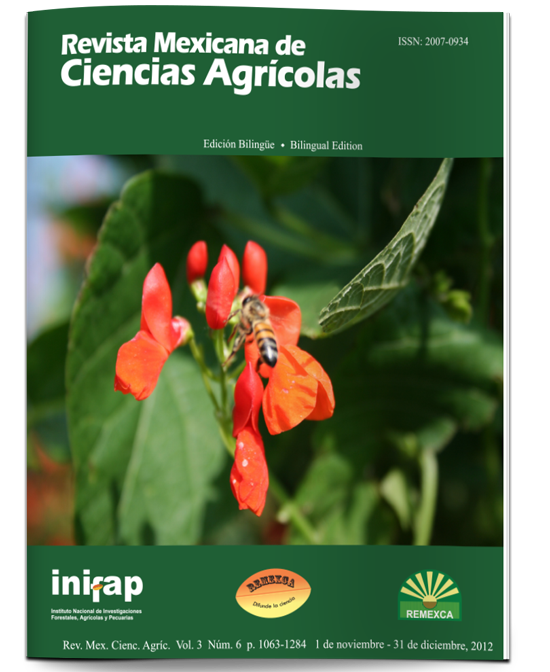Bacterial and fungal seasonality in the rhizosphere of two species of plants in the semiarid Valley of Zapotitlán, Puebla
DOI:
https://doi.org/10.29312/remexca.v3i6.1374Keywords:
Ferocactus latispinus, Viguiera dentata, invasive plants, microorganismsAbstract
In the arid and semiarid systems the vegetation is distributed in patches. Associated to this patches, microorganisms exist that participate in the transformation of organic and mineral compounds that influence the content and mobility of the macro and micro elements, as in the balance and assimilation by plants and therefore important for their growth (Vega et al., 2010). In this study were quantified the bacterial and fungal populations in the rhizosphere of two species of plants with different levels of invasiveness in three vegetation patches from Valle de Zapotitlan, in the state of Puebla. The method of successive dilutions was used to quantify the microbial populations. The results showed that the microbial populations were affected by the physical and chemical conditions of the soil y by the plant species. Additionally, the populations of rhizospheric microorganisms associated to the plants of Viguiera dentada and Ferocactus latispinus were differentially affected by seasonality. The microbiological total count of bacterial and fungal can be used in studies on invasiveness of the ecosystem, by showing in terms of its abundance that are sensitive to the type of plants and weather.
Downloads
Downloads
Published
How to Cite
Issue
Section
License
The authors who publish in Revista Mexicana de Ciencias Agrícolas accept the following conditions:
In accordance with copyright laws, Revista Mexicana de Ciencias Agrícolas recognizes and respects the authors’ moral right and ownership of property rights which will be transferred to the journal for dissemination in open access. Invariably, all the authors have to sign a letter of transfer of property rights and of originality of the article to Instituto Nacional de Investigaciones Forestales, Agrícolas y Pecuarias (INIFAP) [National Institute of Forestry, Agricultural and Livestock Research]. The author(s) must pay a fee for the reception of articles before proceeding to editorial review.
All the texts published by Revista Mexicana de Ciencias Agrícolas —with no exception— are distributed under a Creative Commons License Attribution-NonCommercial 4.0 International (CC BY-NC 4.0), which allows third parties to use the publication as long as the work’s authorship and its first publication in this journal are mentioned.
The author(s) can enter into independent and additional contractual agreements for the nonexclusive distribution of the version of the article published in Revista Mexicana de Ciencias Agrícolas (for example include it into an institutional repository or publish it in a book) as long as it is clearly and explicitly indicated that the work was published for the first time in Revista Mexicana de Ciencias Agrícolas.
For all the above, the authors shall send the Letter-transfer of Property Rights for the first publication duly filled in and signed by the author(s). This form must be sent as a PDF file to: revista_atm@yahoo.com.mx; cienciasagricola@inifap.gob.mx; remexca2017@gmail.
This work is licensed under a Creative Commons Attribution-Noncommercial 4.0 International license.



